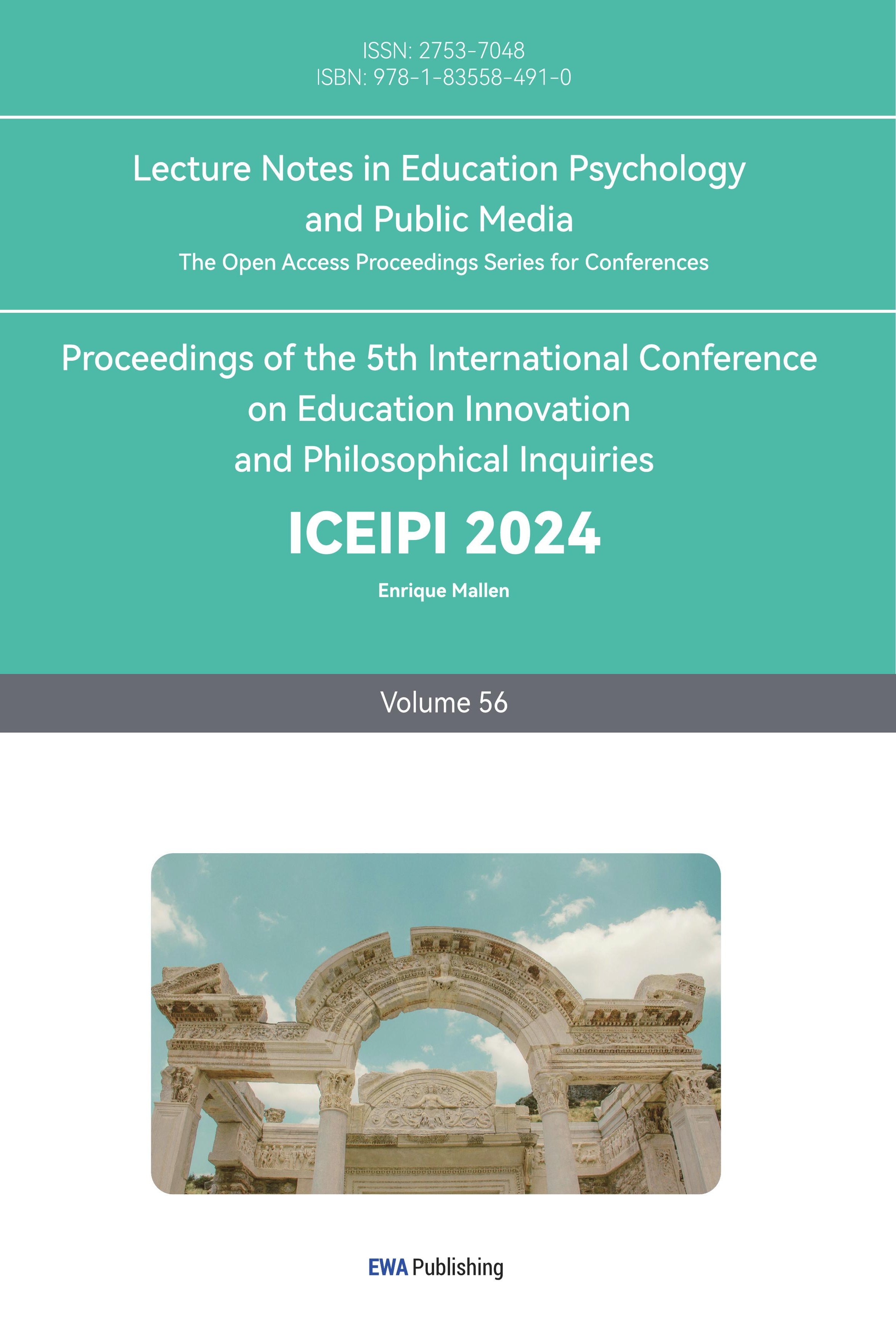1. Introduction
In this day and age, the development of social networking has brought all kinds of convenience to people. People not only can keep up to date with the lateset happenings in the world, but also do online shopping by just staying at home. Online shopping is not only convenient, more importantly because online shops don’t have to pay high rents, they always sell cheaper and more varied goods than brick-and-mortar shops. However, the convenience of online shopping is both its advantage and its disadvantage. The process of online shopping people can only browse the goods through pictures or videos, and with the development of science and technology, pictures and videos can be processed and embellished, largely unable to reflect the real look, coupled with beautiful decorations and advertising slogans, often misleading consumer and prompting them to spend impulsively. People are actually aware that they make a lot of unwanted impulse purchases while using social media, but are unclear about what exact points of advertisement attractes them and what psychology drives them to make impulse purchases. Therefore, this study will start from this breakthrough and conduct a detailed study on this issue, so that people can better understand the traps set by advertisers and what psychology driven them to impulse purchases. So that people could avoid similar behaviours again in the future.
This study looked at this question through a questionnaire. The following research methods were utilised in this study. Firstly, by searching for relevant literature in the field of psychology, we explore what are the core elements that constitute impulse spending in psychological terms and anticipate which specific points in the advertisement will attract consumers to purchase. Then, questionnaires are set up, relevant factors are integrated into life and assumed to be daily consumption scenarios, and psychological theories related to consumption are set up as dependent variables. And distribute the questionnaires and collect data. Finally, the results of the collected questionnaires were analysed and analysed to further explore the factors that influence people's consumption behaviour.
2. Literature Review
Browsing through the literature first grasped some of the psychology of people when making impulse purchases. In this way, a foundation was laid for further research to follow.
2.1. Anchoring Effect
Anchoring effect is a psychological phenomenon. Early explanations of the anchoring effect were produced by Tversky and Kahneman. They suggested that people make inadequate adjustments to yield a ultimate measure based on an initially presented value or parameter. Put it another way, people who are revealed to a higher anchor make inadepuate adjustments downward and vice versa. As a result, estimates are biased toward the anchor values [1]. Simply put, it means that when people make a judgement on something or someone, they are easily dominated by first impressions or first information, which fixes their minds like an anchor sunk to the bottom of the sea. This psychological phenomenon is prevalent in all aspects of life, and generally speaking, when people make decisions, their thinking is often shaped by first impressions. Many financial and economic phenomena are affected by anchoring effect, which is widely used in the fields of business strategy and business negotiation. For example, merchants will use this effect to influence consumers' purchasing decisions by displaying their new products together with those of well-known brands or high-end products, thus increasing the perceived value and sales of their products.
2.2. Cheerleader Effect
The cheerleader effect was coutinually mentioned in an American TV program named How I Met Your Mother [2]. It denotes to a phenomenon that a girl will look more attractive if she is in a bunch of girls rather than in an isolated situation. This effect also applies in the consumer sector, where words like "group" and "mass" are always more attractive to people. That's why advertisers show as many products as possible in their advertising campaigns, because piles of products give consumers a better view. Similarly, a large number of positive reviews for the product will be more consumers, more likely to stimulate the desire of consumers to buy.
2.3. The Mere Exposure Effect
The mere exposure effect (MEE) means to increased liking for a stimulus that follows iterated, unreinforced exposure to that stimulus [3]. There have been more than 400 published studies about the MEE, which happens for a broad array of stimuli under a variety of test labs and real-world conditions. In the field of marketing, the exposure effect plays a key role. Advertisers raise brand awareness by constantly airing adverts, so that consumers can often see these brands and goods on social media. Consumers can see these brands on social media every day, and as time passes, their favourable opinion of the brand will unknowingly increase.
2.4. Availability Cascad
An availability cascade is a self-reinforcing procedure of collective conviction formation by which an expressed awareness triggers a chain reaction that gives the awareness increasing plausibility through its increasing availability in public discourse [4]. In sales, a brand or product is halfway to success when it is repeatedly discussed by consumers due to an availability cascad. Even if some consumers have positive comments about the brand or product, some are negative, but none of them will actually affect. Because a few negative comments in a large number of positive comments will not affect the overall impression of the brand or product.
2.5. Decoy Effect
The core of this theory is a motivation function that integrates consumers' psychological personality traits with two significant kinds of interactions in a competitive marketplace. The model reveals the internal psychological regime on the basis of which consumers make their options when facing competing brands on the marketplace [5]. This effect is particularly common in marketing, where businesses set up an attractive intermediate option so that consumers feel that this option is more advantageous than the other options, and thus spend money. The decoy can be the actual product or service, or it can be a functional advantage or price offer, etc.
3. Research Method
This study sets up the questionnaire. Incorporating relevant consumer psychology theories into life, assuming into specific daily life consumption scenarios, investigating whether people will spend money in these specific situations, and by analysing the collected answers, verified whether these consumer psychology really plays a facilitating role when consumers spend money. A nine-question questionnaire was set up through the software. The nine questions specifically cover several of the theoretical and preconceived scenarios which mentioned above, and distribute the questionnaire to classmates, friends and family around through social software, and collect responses.
4. Research Result and Discussion
Sixty-seven responses of the questionnaire were received, and the responses were then pooled and analysed to obtain new findings.
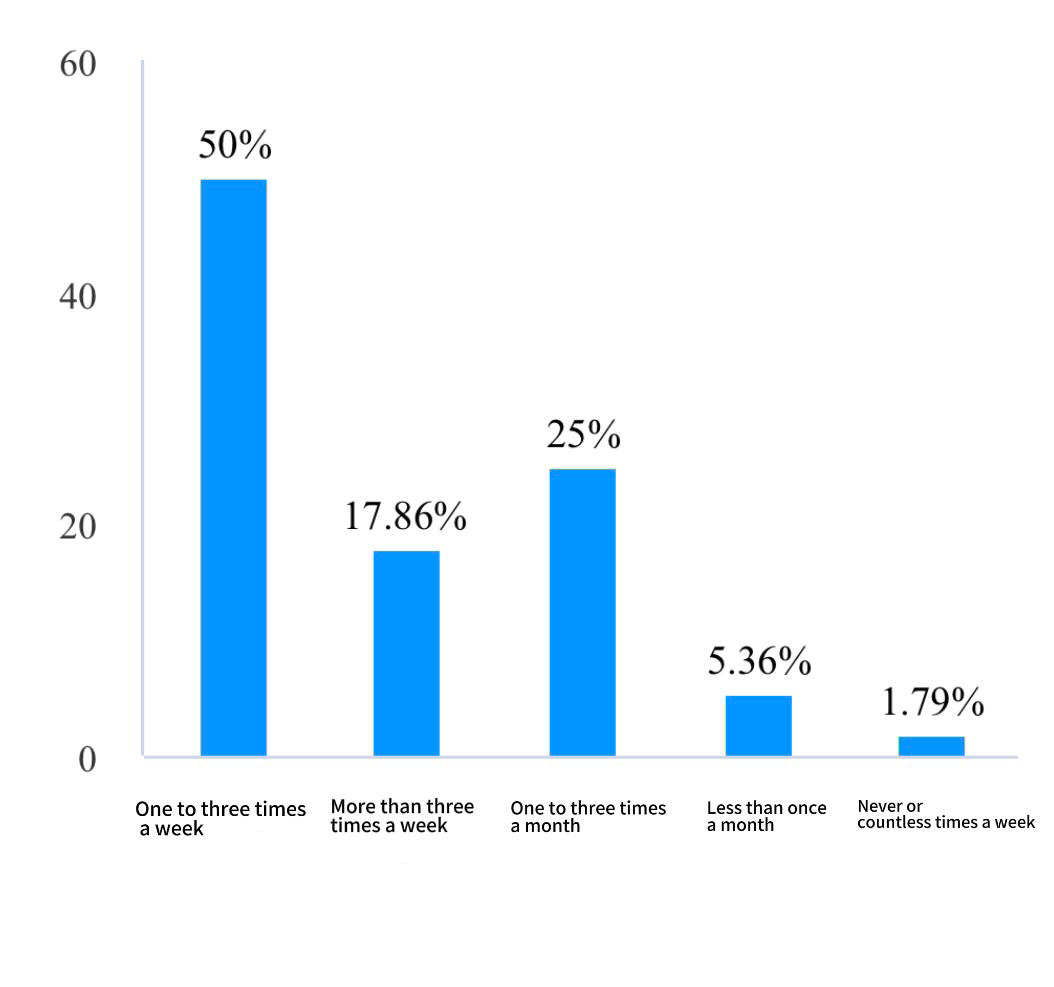
Figure 1: Frequency of online shopping.
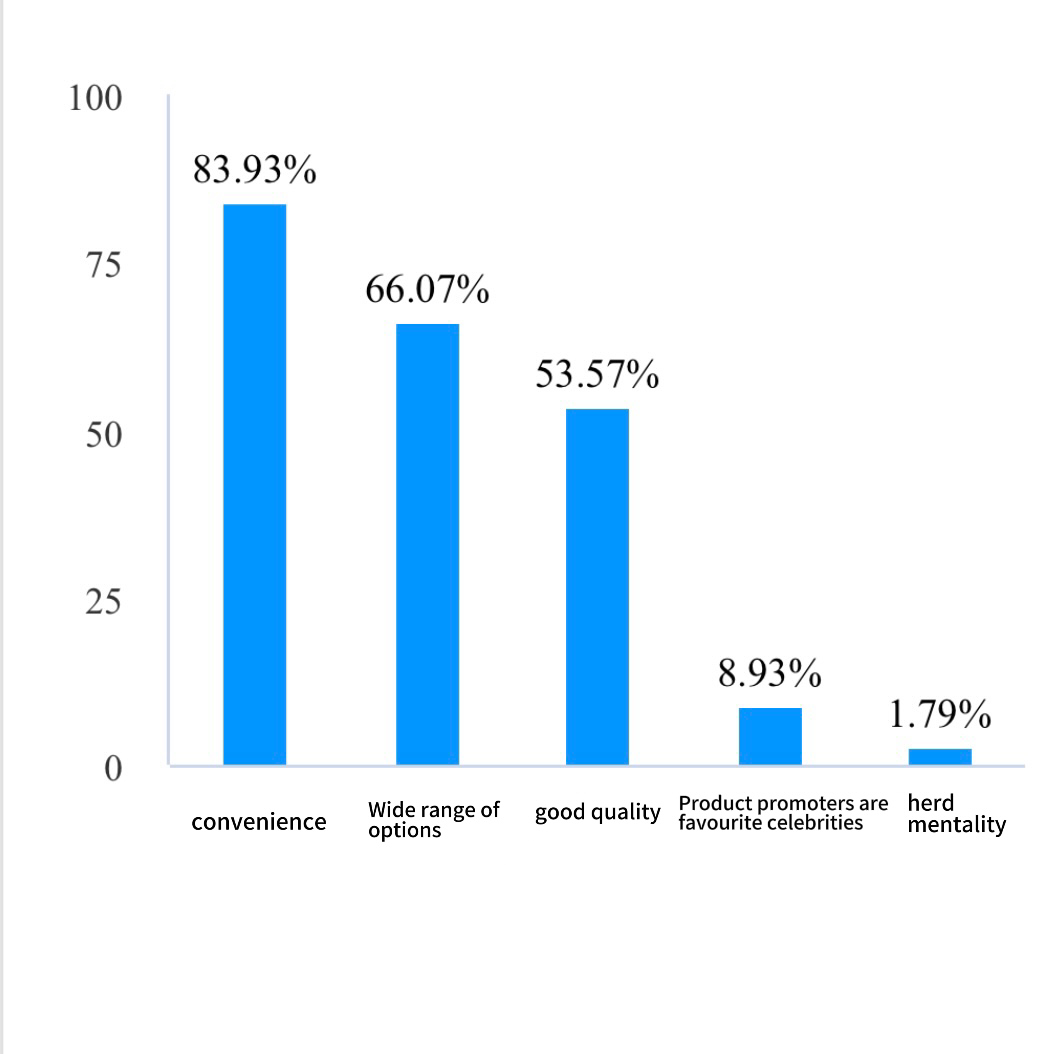
Figure 2: Motivation to shop online.
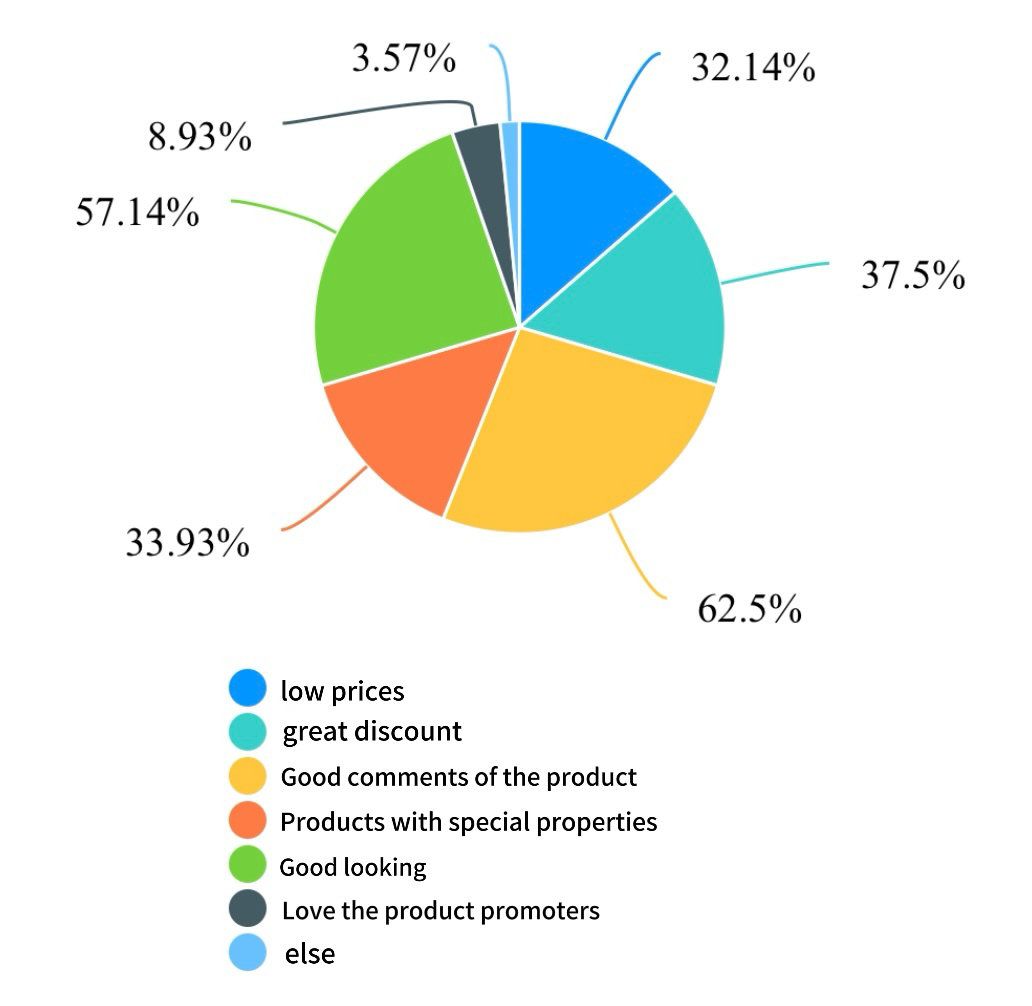
Figure 3: Which points in the advert that will stimulate a desire to buy?
The use of the Internet as a shopping and purchasing bridge has seen unprecedented growth. Most scholars expect the global electronic marketplace to dramatically impact trade in the twenty first century [6]. According to the Figure1, Figure2, Figure3 above, more than sixty percent of people shop online one to three times or even more a week, with almost no one not spending money online. Among the reasons why consumers choose to shoponline, the convenience of online shopping, the variety of choices available and the quality of the products are the main reasons. In response to the question of which points in the advert that will stimulate a desire to buy, 62.5 per cent of consumers are influenced by product reviews and 57.14 per cent are influenced by the appearance of the product, which are the most frequently chosen of all options. The rest of the choices, such as: big discounts, were selected with a probability of 30 per cent or less.
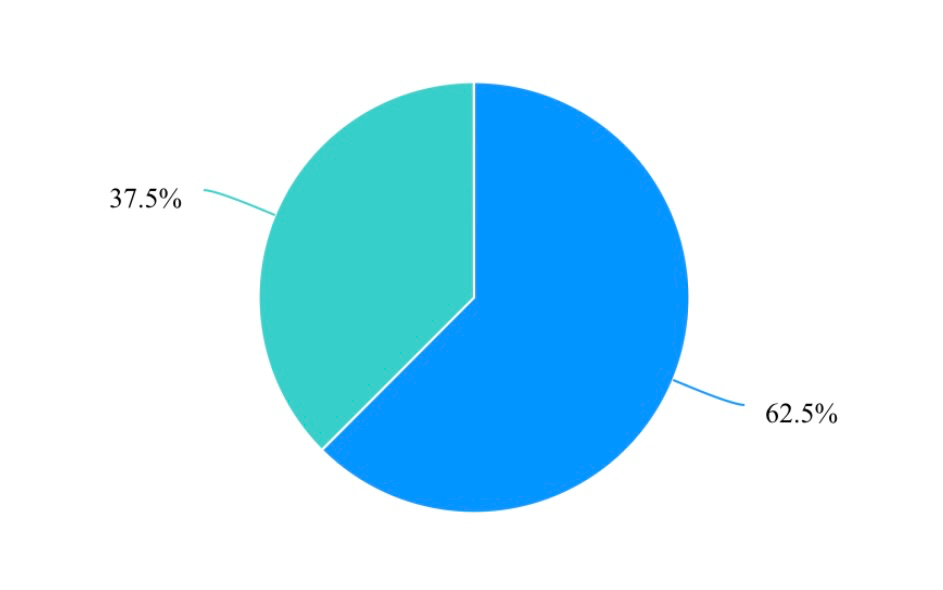
Figure 4: If an item that is not an everyday necessity but that you like and have been debating whether to buy for some time is heavily discounted online, would you choose to buy it?
62.5 per cent of consumers chose would, suggesting that the psychological theory of the Anchoring effect plays a role when consumers make purchases. When there is a huge difference in the price of a product before and after a discount, consumers will be greedy and make impulse online purchases (Figure 4).
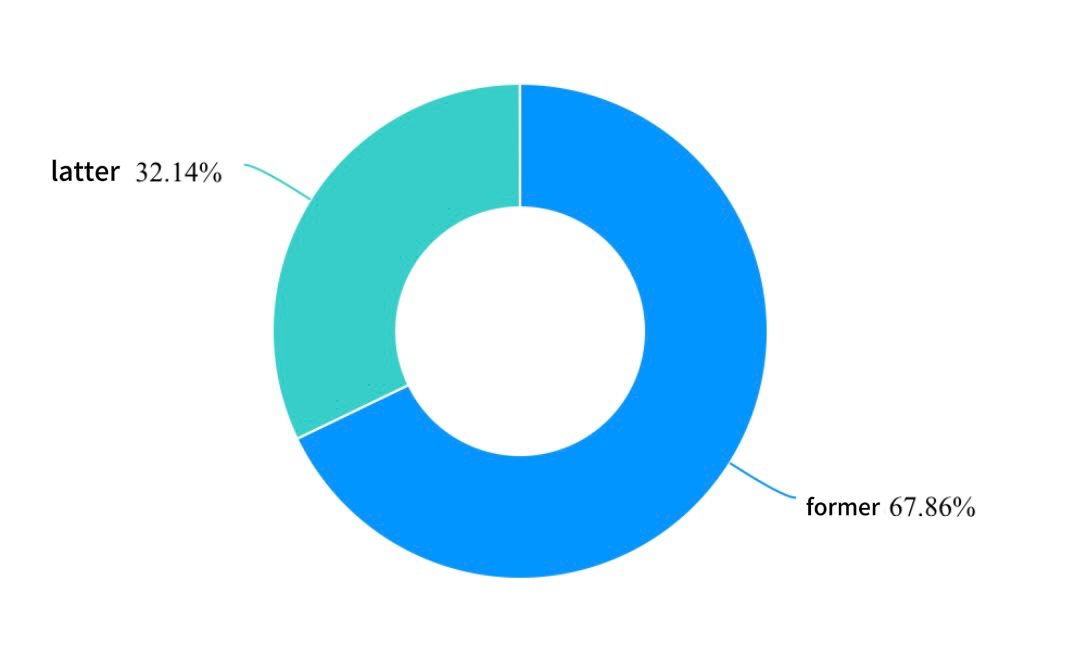
Figure 5: When buying an item, one that you think is perfect in every way but has average sales, and the other that you are slightly sceptical about but has extremely high sales and good reviews, which would you choose to buy?
67.86 per cent chose the former, contrary to the originally expected result, which would have expected people to be influenced by the cheerleader effect, choosing the former that the product with a huge sales volume (Figure 5).
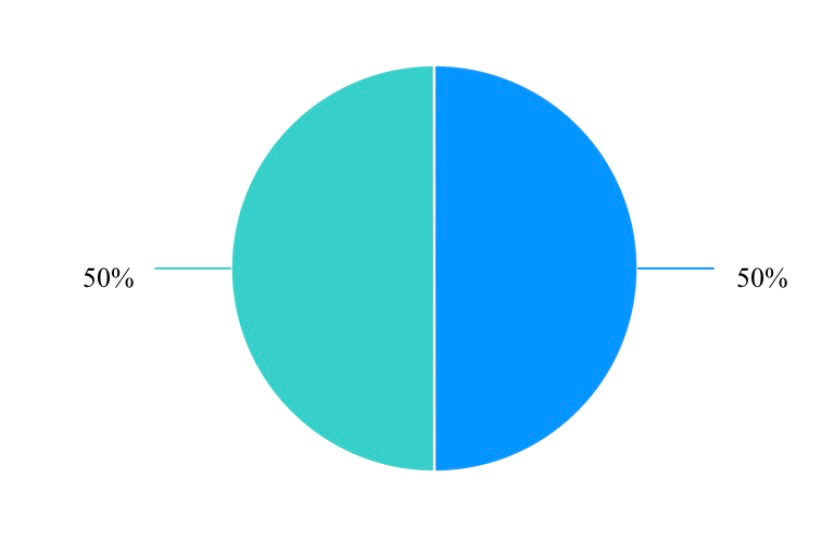
Figure 6: If you need to buy a product that you don't know anything about, will you just buy a brand that you often see on social media, or will you do more work and learn about a new brand?
The frequency of choice for both answers was 50 per cent, so the effect on the exposure theory here is still pronounced (Figure 6).
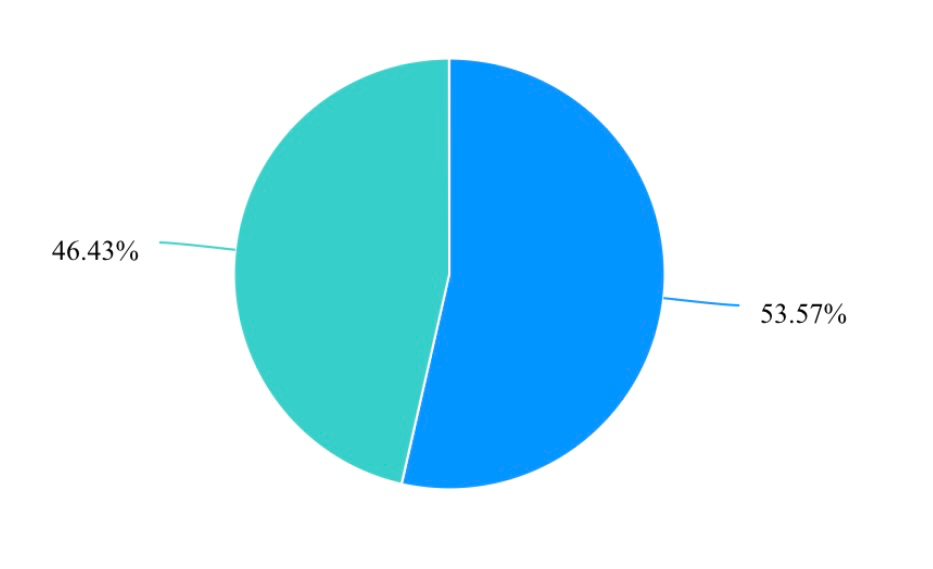
Figure 7: In the midst of the many positive reviews, there are few of bad reviews, does it make you doubt the quality of this product and the authenticity of its reviews?
53.57% consumers would doubt the authenticity of other reviews, but the difference in the frequency of choices between the two responses here is not significant, and further analysis is needed to examine whether availability cascad plays a role in consumer's impulsive spending (Figure 7).
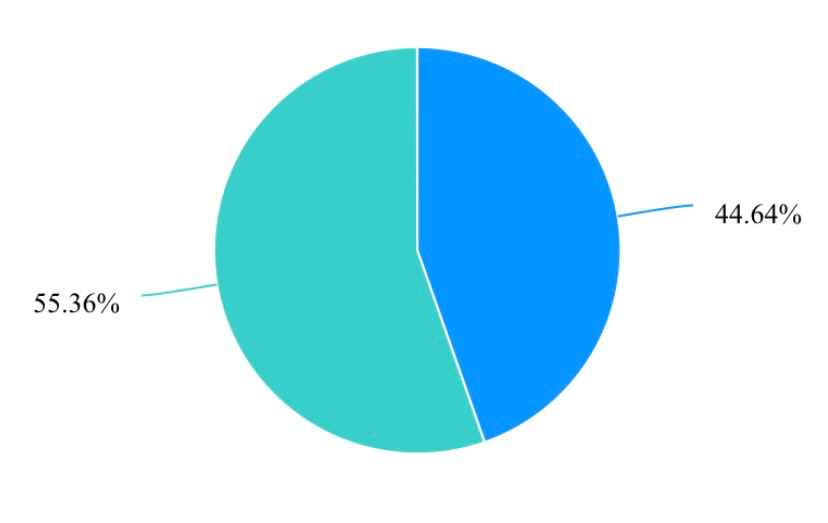
Figure 8: If you only want to buy one item worth $60, but now the merchant has a promotion that this item and another item worth $89 can be purchased together for only $99, will you choose to buy them together?
55.36 per cent said they would not buy together, suggesting that the decoy effect does not play a substantial role in people's impulse spending (Figure 8).
The results of the questionnaire survey revealed that many of the psychological factors and theories that were expected to influence or motivate consumers to make impulsive purchases did not actually play a substantial role, and consumers did not seem to be influenced by these theories. So further thought and research has been given to the specific reasons for this.
The cheerleader effect for faces and bodies or other physical factors are due to a bias in memory and does not happen at an initial stage of perceptual encoding [7]. So, people still trust their own intuition and firm their choice more than being influenced by this effect.
Repetition is just one of several variables that may implicate fluency and hence evaluations. Variables, such as symmetry, harmony, and complexity, that govern aesthetic experience also guide fluency experience [8]. So repeated presence of a brand or product in the consumer's field of vision is not necessarily 100% likely to increase the consumer's goodwill, and there are many other factors that influence people's choices.
Since the respondents to the questionnaire are mainly young people and university students, the cost of living is not very high for this group of consumers. Within this group 83 per cent of students worked at some point during term‐time of their degree programme. In total 58 per cent of those students who worked did so to either cover or contribute to basic costs of living [9]. So they may have wavered in the face of the decoy effect, but were forced by the pressures of life to save money.
5. Conclusion
The questionnaire survey which set up in this study has certain limitations, such as no gender distinction or age difference. Therefore, the results obtained may not be particularly accurate and have certain biases. In addition, the number of answers collected is not very large, so the results may not be very general. By analysing the results of the questionnaire, it was found that the conclusions yu initial assumptions were different. Many theories related to consumer psychology do not play a role in people's real-life consumer behaviour.
Therefore, in future studies, further research will be carried out on results that do not meet the original expectations, to analyse more specifically the different reasons, as well as to further study the factors that influence people's impulse spending. After determining what factors specifically motivate consumers to make impulse purchases, In the furture, the second step of the study - the blocking mechanism - will be carried out. Finding a group of experimenters to conduct simulations to discover appropriate blocking mechanisms to tell consumers how to think and warn themselves when using social media and seeing adverts in the future, so as to avoid impulsive consumption and falling into the traps set by advertisers.
References
[1]. Furnham, A., & Boo, H. C. (2011). A literature review of the anchoring effect. The journal of socio-economics, 40(1), 35-42.
[2]. Peng, C., Mao, Y., Pagliaro, S., Roberts, S., & Livi, S. (2020, September). Are individuals perceived as more attractive within a group? A Confirmative Study of Group attractiveness effect and the cheerleader effect in China. In Healthcare (Vol. 8, No. 3, p. 344). MDPI.
[3]. Bornstein, Robert F., and Catherine Craver-Lemley. "Mere exposure effect." Cognitive illusions (2022): 241-258.
[4]. Kuran, T., & Sunstein, C. R. (1998). Availability cascades and risk regulation. Stan. L. Rev., 51, 683.
[5]. Zhang, T., & Zhang, D. (2007). Agent-based simulation of consumer purchase decision-making and the decoy effect. Journal of business research, 60(8), 912-922.
[6]. Limayem, M., Khalifa, M., & Frini, A. (2000). What makes consumers buy from Internet? A longitudinal study of online shop**. IEEE Transactions on systems, man, and Cybernetics-Part A: Systems and Humans, 30(4), 421-432.
[7]. Hsieh, J. Y., Gwinn, O. S., Brooks, K. R., Stephen, I. D., Carragher, D. J., & Nicholls, M. E. (2021). The “cheerleader effect” in facial and bodily attractiveness: A result of memory bias and not perceptual encoding. Quarterly Journal of Experimental Psychology, 74(5), 972-980.
[8]. Fang, X., Singh, S., & Ahluwalia, R. (2007). An examination of different explanations for the mere exposure effect. Journal of consumer research, 34(1), 97-103.
[9]. Holmes, V. (2008). Working to live: why university students balance full‐time study and employment. Education+ Training, 50(4), 305-314.
Cite this article
Xie,R. (2024). A Study of People's Impulse Spending Psychology under the Influence of Online Social Media. Lecture Notes in Education Psychology and Public Media,56,53-60.
Data availability
The datasets used and/or analyzed during the current study will be available from the authors upon reasonable request.
Disclaimer/Publisher's Note
The statements, opinions and data contained in all publications are solely those of the individual author(s) and contributor(s) and not of EWA Publishing and/or the editor(s). EWA Publishing and/or the editor(s) disclaim responsibility for any injury to people or property resulting from any ideas, methods, instructions or products referred to in the content.
About volume
Volume title: Proceedings of the 5th International Conference on Education Innovation and Philosophical Inquiries
© 2024 by the author(s). Licensee EWA Publishing, Oxford, UK. This article is an open access article distributed under the terms and
conditions of the Creative Commons Attribution (CC BY) license. Authors who
publish this series agree to the following terms:
1. Authors retain copyright and grant the series right of first publication with the work simultaneously licensed under a Creative Commons
Attribution License that allows others to share the work with an acknowledgment of the work's authorship and initial publication in this
series.
2. Authors are able to enter into separate, additional contractual arrangements for the non-exclusive distribution of the series's published
version of the work (e.g., post it to an institutional repository or publish it in a book), with an acknowledgment of its initial
publication in this series.
3. Authors are permitted and encouraged to post their work online (e.g., in institutional repositories or on their website) prior to and
during the submission process, as it can lead to productive exchanges, as well as earlier and greater citation of published work (See
Open access policy for details).
References
[1]. Furnham, A., & Boo, H. C. (2011). A literature review of the anchoring effect. The journal of socio-economics, 40(1), 35-42.
[2]. Peng, C., Mao, Y., Pagliaro, S., Roberts, S., & Livi, S. (2020, September). Are individuals perceived as more attractive within a group? A Confirmative Study of Group attractiveness effect and the cheerleader effect in China. In Healthcare (Vol. 8, No. 3, p. 344). MDPI.
[3]. Bornstein, Robert F., and Catherine Craver-Lemley. "Mere exposure effect." Cognitive illusions (2022): 241-258.
[4]. Kuran, T., & Sunstein, C. R. (1998). Availability cascades and risk regulation. Stan. L. Rev., 51, 683.
[5]. Zhang, T., & Zhang, D. (2007). Agent-based simulation of consumer purchase decision-making and the decoy effect. Journal of business research, 60(8), 912-922.
[6]. Limayem, M., Khalifa, M., & Frini, A. (2000). What makes consumers buy from Internet? A longitudinal study of online shop**. IEEE Transactions on systems, man, and Cybernetics-Part A: Systems and Humans, 30(4), 421-432.
[7]. Hsieh, J. Y., Gwinn, O. S., Brooks, K. R., Stephen, I. D., Carragher, D. J., & Nicholls, M. E. (2021). The “cheerleader effect” in facial and bodily attractiveness: A result of memory bias and not perceptual encoding. Quarterly Journal of Experimental Psychology, 74(5), 972-980.
[8]. Fang, X., Singh, S., & Ahluwalia, R. (2007). An examination of different explanations for the mere exposure effect. Journal of consumer research, 34(1), 97-103.
[9]. Holmes, V. (2008). Working to live: why university students balance full‐time study and employment. Education+ Training, 50(4), 305-314.





